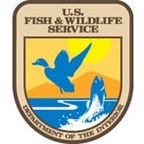Time to Fly
Steve Barlow
In my first 5 months as a new U.S. Fish and Wildlife Service Pilot Biologist, I have experienced many firsts, learned a ton, and have already created more memories than most people do in five years. This past month proved to be no exception. I found myself a member of a three-person waterfowl banding crew in South Dakota where we spent about 25 days building swim-in traps, scouting a huge geographic area for trap sites, seeking landowner permission to access areas, and finally settling into a routine of daily trap checking, banding, and rebaiting.
Our team was led by crew leader and fellow pilot biologist Walt Rhodes. Walt is indeed an expert in all things waterfowl, and I am grateful to have had him mentor me in my first banding experience. Along with his expertise, we were also fortunate to have on the crew Stephanie Catino, a wildlife biologist with the Division of Migratory Bird Management. Stephanie plays a key role in the Wing Bee surveys and her experience helped me a lot as I picked up on particular nuances like “wispy feather tips.”
Upon arrival in eastern South Dakota, we were greeted with hot, dry windy days and rather poor habitat conditions. This made our efforts to find suitable trap sites a bit more challenging. We covered more gravel roads than I can recall but finally keyed in on a few promising sites. Once in action, it took a week or so, just as Walt predicted, for the ducks to really find the bait and overcome the spookiness of the traps…but once we got rolling, it went fast and furious.
It was a challenge to minimize blue wing teal captures, while maximizing captures of ducks such as mallard and pintails. But with expert site selection this greatly benefited us towards a more diverse species composition goal. As time passed, we adapted to what we captured and kept our final tally of banded ducks more diverse. We ended up banding nine different species. It was truly one of those situations where we were given lemons and decided to just make lemonade.
The entire experience was profound, but if I had to choose one highlight it would be the time when I pulled a banded pintail from the catch box…only to realize it was not our band! We later learned this particular pintail had been banded in 2016 near Fairbanks, Alaska! As a wildlife biologist we rarely are focused on individual animals as we mostly work on a population scale. But I could not help myself from thinking about all this individual hen pintail had seen and experienced since she was banded. I caught myself imagining her life history and all the places she has seen, the flights she has taken, and the stories she could tell.
As I start my sixth month as a pilot biologist I can only imagine the memories and stories I will be able to tell with more incredible experiences to come. We are blessed to work within a field full of daily miracles and incredible experiences. I am grateful for it all, and grateful for the reminder that individual banded pintail provided. Hopefully, I too will have many successful flights and experiences out there and remain grateful for every one of them.
